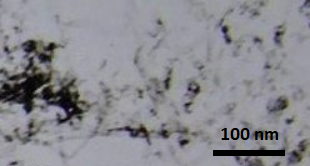(-OH) Functionalized Short Single Walled Carbon Nanotubes, Purity: >92%
- SKU:
- NG01SW0202
- Shipping:
- Calculated at Checkout
Frequently bought together:
Description
5 grams/145 €
25 grams/495 €
100 grams/1640 €
500 grams/5960 €
1000 grams/9940 €
Please contact us for quotes on larger quantities !!!
(-OH) Functionalized Short Single Walled Carbon Nanotubes
OD: 1-2 nm, Length: 1-3 µm, Purity: >92%
Technical Properties
| Purity | > 92 % |
| Content of (-OH) | 4.0% |
| Color | black |
| Average Diameter | 1.0 nm |
| Length | 1-3 µm |
| OD | 1-2 nm |
| ID | 0.8-1.6 nm |
| Tap Density | 0.15 g/cm3 |
| True Density | 2.2 g/cm3 |
| SSA | 370 m2/g |
| Ash | 1.5 wt% |
| Thermal Conductivity | 45-190 W/m.K |
| Electrical Conductivity | 98 S/cm |
| Ig/Id | 9 |
| Manufacturing Method | CVD |
| CAS No | 308068-56-6 |
TEM Image

Applications
- Biomedical & Life Sciences: Thanks to their hydroxyl (-OH) functional groups and shortened morphology, these SWCNTs exhibit excellent aqueous dispersibility and biocompatibility. They are widely used in targeted drug delivery, biosensors, and nanoprobes, where stable dispersion and surface reactivity are essential for molecular interaction and diagnostic precision.
- Chemical & Catalytic Applications: The -OH functionality enhances chemical reactivity, making these nanotubes effective in heterogeneous catalysis, template-assisted synthesis, and photoluminescent systems. Their high surface area and edge-rich structure support active site exposure and efficient molecular anchoring.
- Mechanical & Composite Engineering: Short SWCNTs disperse uniformly in polymer matrices, improving mechanical strength, thermal stability, and electrical conductivity in CNT-reinforced composites. Their shortened length facilitates better processability and interfacial bonding in structural materials and coatings.
- Energy Storage & Conversion: These nanotubes contribute to high-performance lithium-ion batteries, supercapacitors, and hydrogen storage systems by enabling fast charge transport and stable electrode–electrolyte interfaces. Their morphology supports efficient packing and active surface utilization in energy devices.
- Electronics & Optoelectronics: With their nanoscale diameter and functionalized surface, they are ideal for gas-discharge tubes, flat panel displays, transistors, and solar cells. Their optical activity and conductivity also enhance performance in photoluminescent devices and transparent conductive films.






